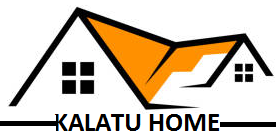When you think about making your home more comfortable, things like the thermostat, windows, or heating and cooling system probably come to mind first. But there are important materials hidden in your walls, attic and basement doing a lot of the hard work to keep your home insulated from outdoor temperatures and dampen sounds. Let us explore what is behind the scenes that make all the difference when it comes to keeping noise out and warmth in.
Insulation Basics
Insulation creates a barrier between the inside and outside of your home to block heat flow and noise. There are a few main types used in construction: fiberglass, mineral wool, cellulose, rigid foam boards, and expandable polystyrene insulation. Fiberglass batt insulation made of spun glass fibers is one of the most common and affordable types, while rigid foam boards provide maximum efficiency. Insulation works by trapping tiny air pockets, since air is actually a poor conductor of heat, cold and sound waves. According to the experts over at Epsilyte.com, the more trapped air pockets from densely packed insulation, the more effective the sound dampening and heat control!
How Insulation Keeps Heat In
On cold winter days and frigid nights, insulation works hard around the clock to prevent warm indoor air from escaping to the freezing outdoors. During hot summer months, it also blocks intense outdoor heat from easily entering and raising indoor temperatures. This means that air conditioners do not have to work on overdrive to maintain a comfortable environment. Strategically installed rigid insulation panels made of expandable polystyrene below floors and perimeter foundations can make a very big difference in maximizing energy savings.
Battens Down the Hatches Against Noise
Ever had loud neighbors, constant street noise from traffic or echoey rooms making it nearly impossible to enjoy some peace and quiet at home? Insulation helps here too by blocking, absorbing or damping external sounds trying to pass through exterior walls, windows and floors. Certain materials like caulked panel seams between insulation boards and green glue applied between drywall sheets can work wonders at dampening noise vibrations. Green glue works by slowing sound wave transmission through its viscoelastic polymers. Expandable polystyrene insulation also absorbs sound waves instead of letting them easily pass through due to its dense cellular structure. Strategically placed insulation makes all the difference for effectively controlling bothersome noise.
More Insulation Tips
When installing new insulation, do not forget key spots like rim joists in basements and attic hatches or doors. Polyurethane spray foam can work well for sealing rim joist gaps. For attic hatches, attach rigid foam insulation to the back and weatherstrip the edges to prevent heat loss. Last, don’t cram insulation under roof decking but leave at least one inch clearance underneath to prevent moisture issues.
Future Insulation Innovations
Exciting insulation innovations on the horizon include aerogel blankets, an ultra-lightweight synthetic material derived from gel. Aerogels insulate 2-3 times better than rigid foam without taking up much space, making them extremely efficient. Their nano-porous structure almost completely blocks conductive heat, cold and sound waves. While still expensive to produce, widespread aerogel use is expected to greatly boost insulation performance in the near future.
Conclusion
Proper installation using today’s most efficient materials like expandable polystyrene insulation boards can lead to better temperature and sound regulation year-round. As you tackle new construction or home improvement projects, do not forget to enlist insulation as an important yet often overlooked component for comfort. It works its magic out of sight to help make your home’s interior a more enjoyable and temperate place to relax, work and live.

